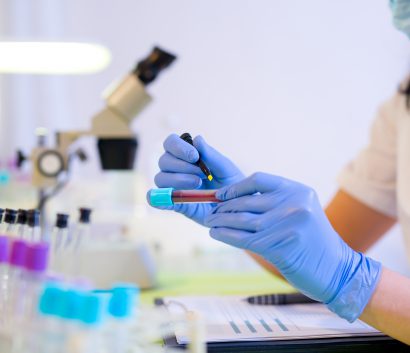How can I be exposed?
You can be exposed to PFAS by
drinking water from PFAS-contaminated municipal sources or private wells
eating fish caught from water contaminated by PFAS (PFOS, in particular)
accidentally swallowing or breathing contaminated soil or dust
eating food (e.g., meat, dairy, and vegetables) produced near places where PFAS were used or made
eating food packaged in material that contains PFAS
accidentally swallowing residue or dust from consumer products containing PFAS such as stain resistant carpeting and water repellent clothing
Ingestion of residue and dust from PFAS-containing consumer products is another way people are exposed to PFAS. Research has suggested that exposure to PFOA and PFOS from today’s consumer products is generally lower than exposures from PFAS-contaminated drinking water. Some products that might contain PFAS include
- stain resistant carpets, upholstery, and other fabrics,
- water resistant clothing,
- cleaning products,
- personal care products and cosmetics (e.g., shampoo, dental floss, nail polish, and eye makeup), and
- paints, varnishes, and sealants.
Special Considerations
Children

Young children may be more likely to get PFAS in their bodies because they tend to chew on toys and fabrics and often put their hands into their mouths. Children can also be exposed by
- Drinking formula mixed with PFAS-contaminated water, and
- Drinking breastmilk from persons exposed to PFAS
- Breastfeeding – PFAS can be found in human breast milk. Clinicians can assist patients in deciding whether to breastfeed based on factors specific to the patient and the child. Due to the many benefits of breastfeeding, the Centers for Disease Control and Prevention (CDC) and American Academy of Pediatrics recommend that most nursing people continue to breastfeed. For more information, please visit PFAS and Breastfeeding.
Workers
People whose work involves the making or processing of PFAS and PFAS-containing materials are more likely to be exposed than the general population. Workers may be exposed by touching or swallowing PFAS or PFAS-containing materials or by breathing in associated dust, aerosols, or fumes. For more information on worker exposures, please visit the National Institute for Occupational Safety and Health PFAS webpage.
You can lower your exposure to PFAS in these ways:
If your drinking water is contaminated above levels specified by the EPA or your state government, use an alternate water source for drinking, preparing food, cooking, brushing teeth, and any other activity when you might swallow water. If you do not know if your water is contaminated, ask your local health department.
Avoid eating contaminated fish or game. Check with your local or state health and environmental quality departments for fish or hunting advisories in your area and follow the advisories.
Follow applicable advisories or warnings about agricultural products in your area that may be contaminated with PFAS.
Because PFAS are at low levels in some foods and in the environment (air, water, soil, etc.) completely eliminating exposure is unlikely.
Even though recent efforts to remove PFAS have reduced the likelihood of exposure, some products may still contain them. If you have questions or concerns about products you use in your home, contact the Consumer Product Safety Commission at (800) 638-2772.
Exposure Reduction
Nearly all people in the U.S. have had exposure to PFAS. There are steps you can take to reduce your exposure to PFAS.
- If you are concerned about PFAS exposure through drinking water, determine whether your water has been tested by contacting your local water department. If you have a private well, you can contact local health or environmental agencies for guidance on how to get a private well tested. You may consider in-home water treatment filters that are certified to lower the levels of PFAS in water.
- If you have questions or concerns about products used in your home, such as cleaning and personal care products, contact the Consumer Product Safety Commission at (800) 638-2772.
- If you have questions about bottled water, please contact the FDA. There are no established standards for PFAS in bottled water as of January 18, 2024.
- Talk with your doctor if you have concerns about your exposures.

